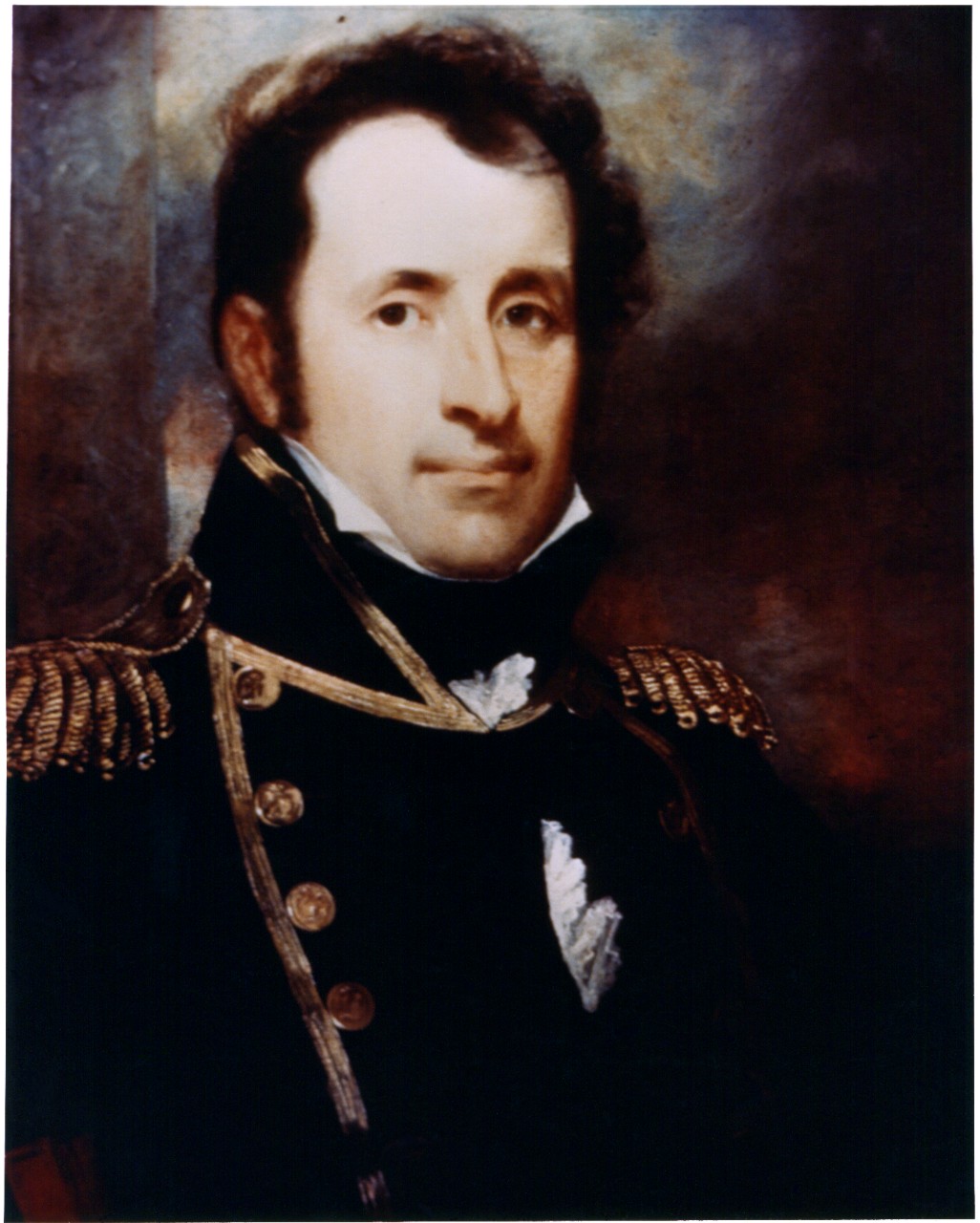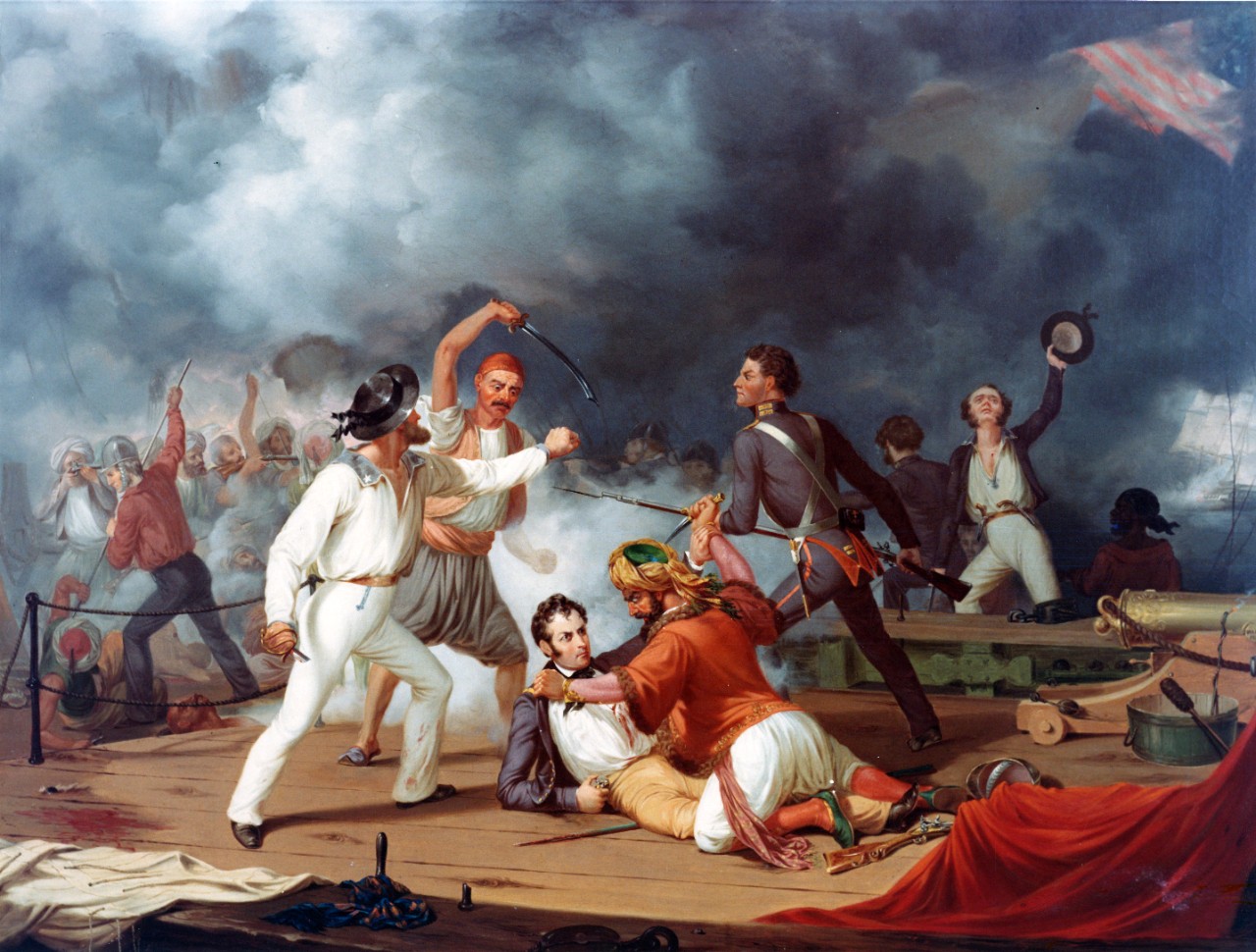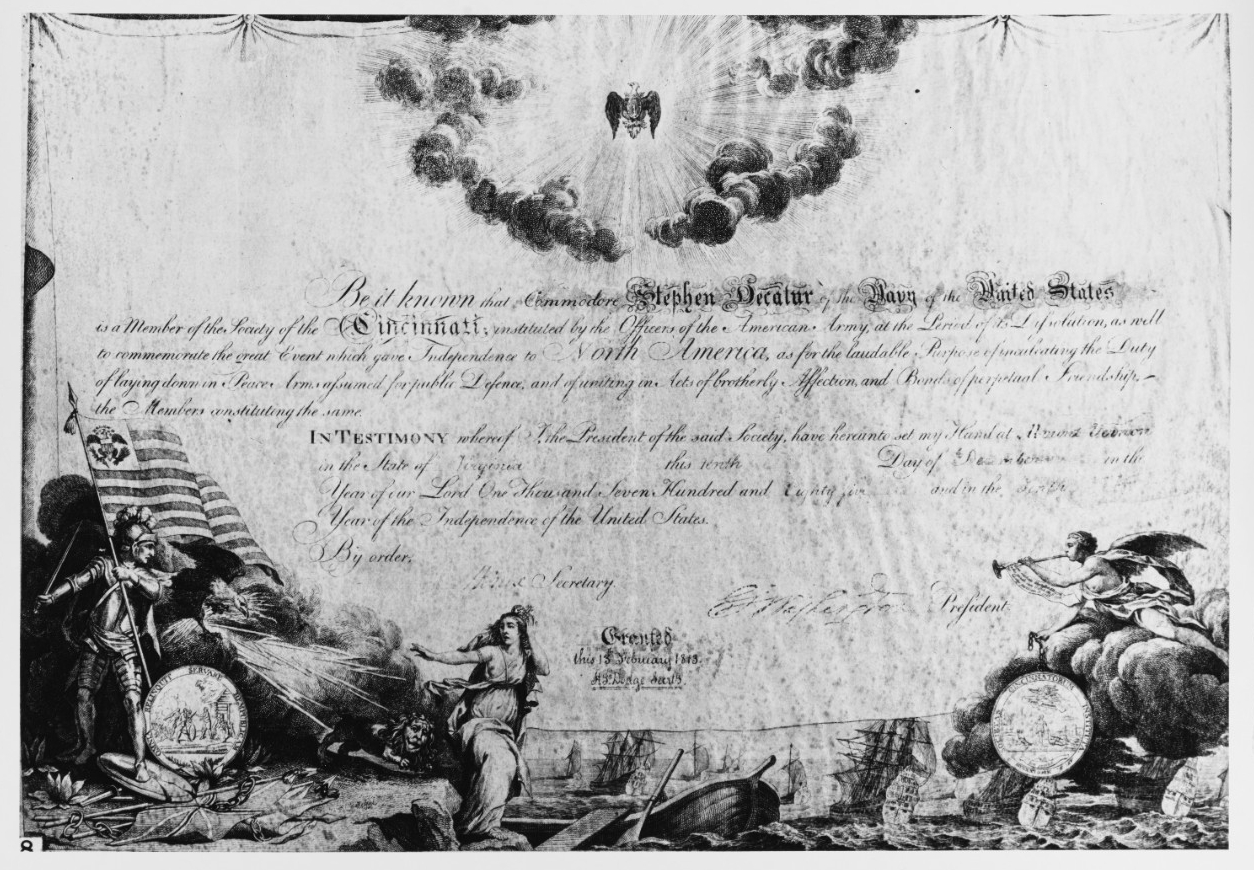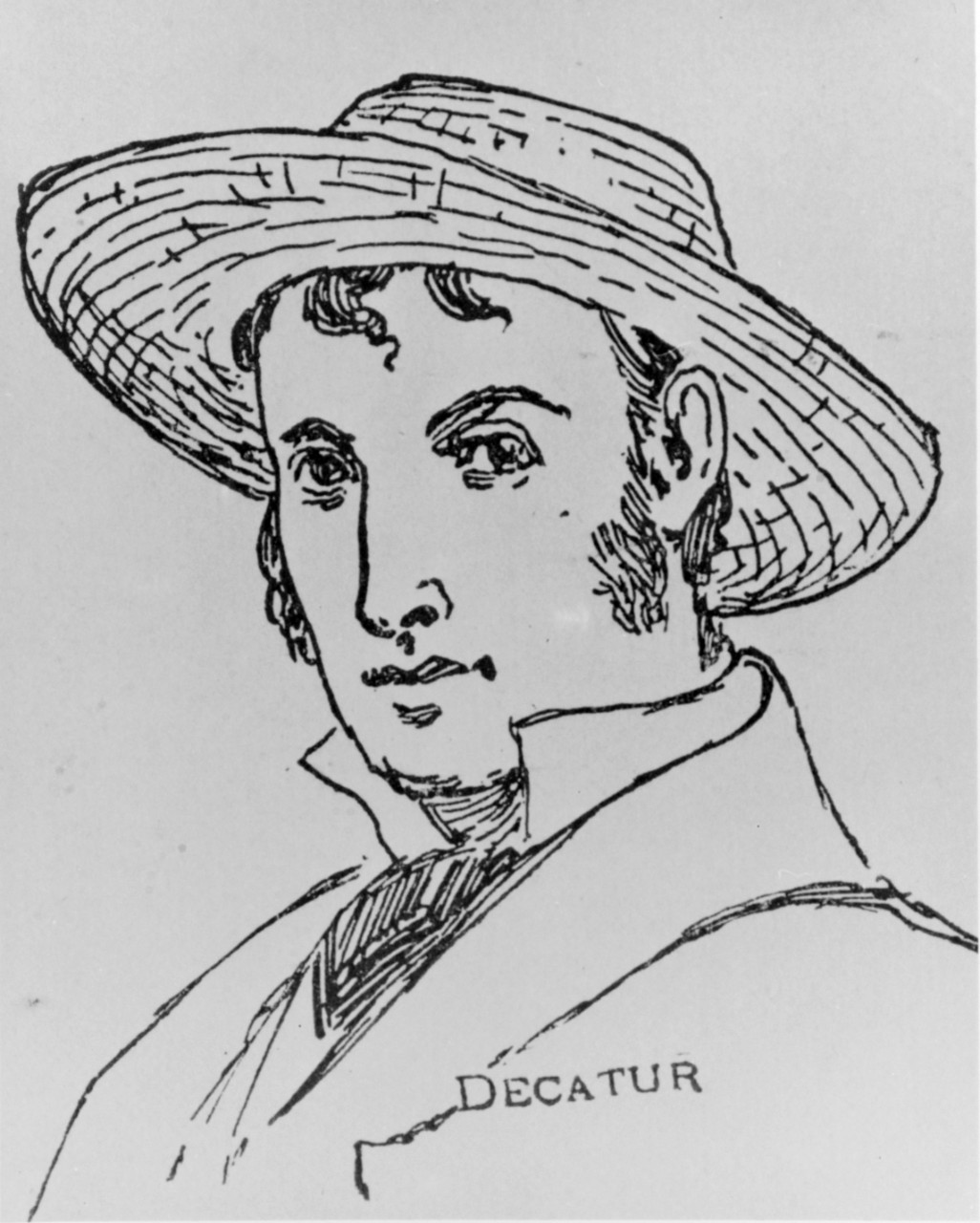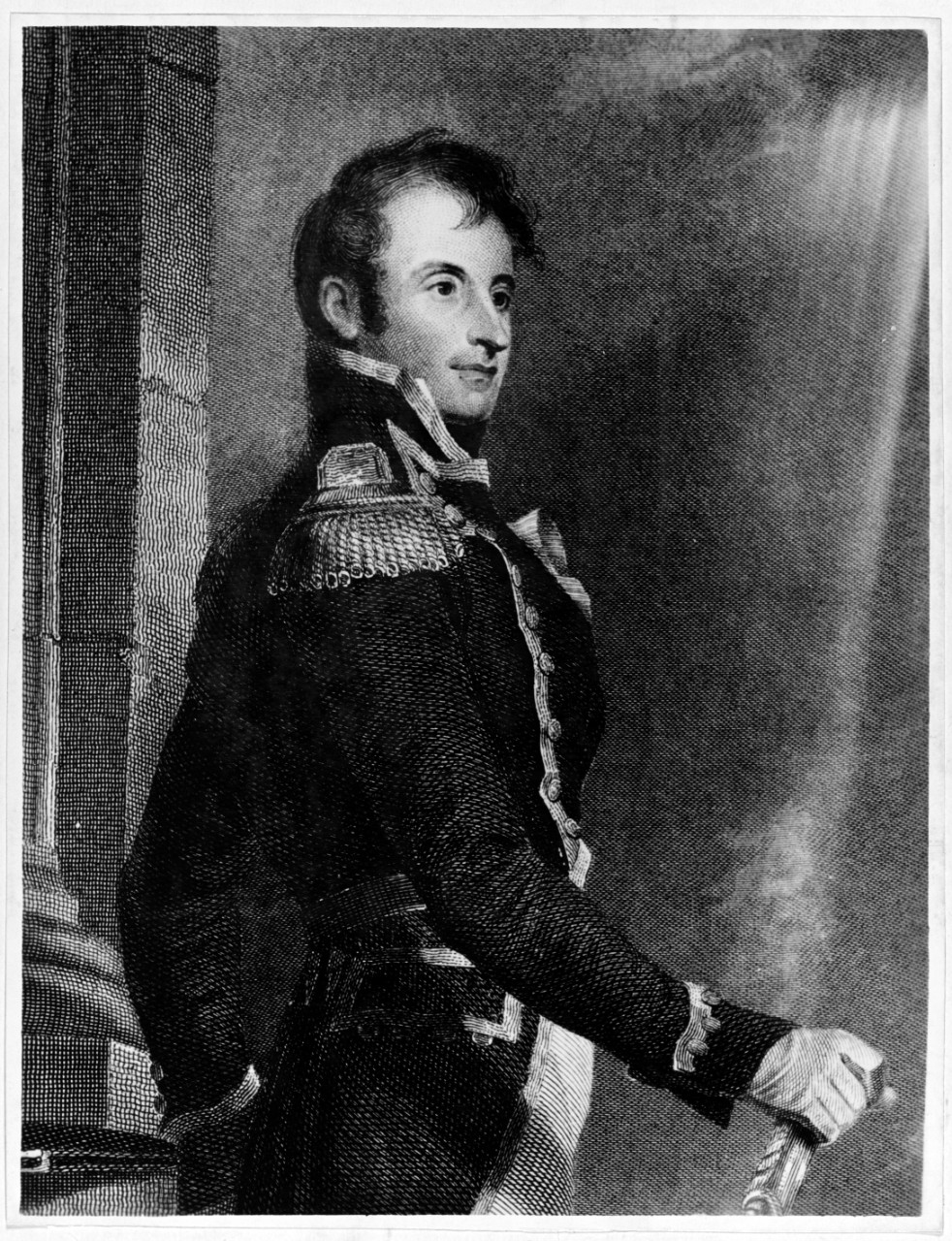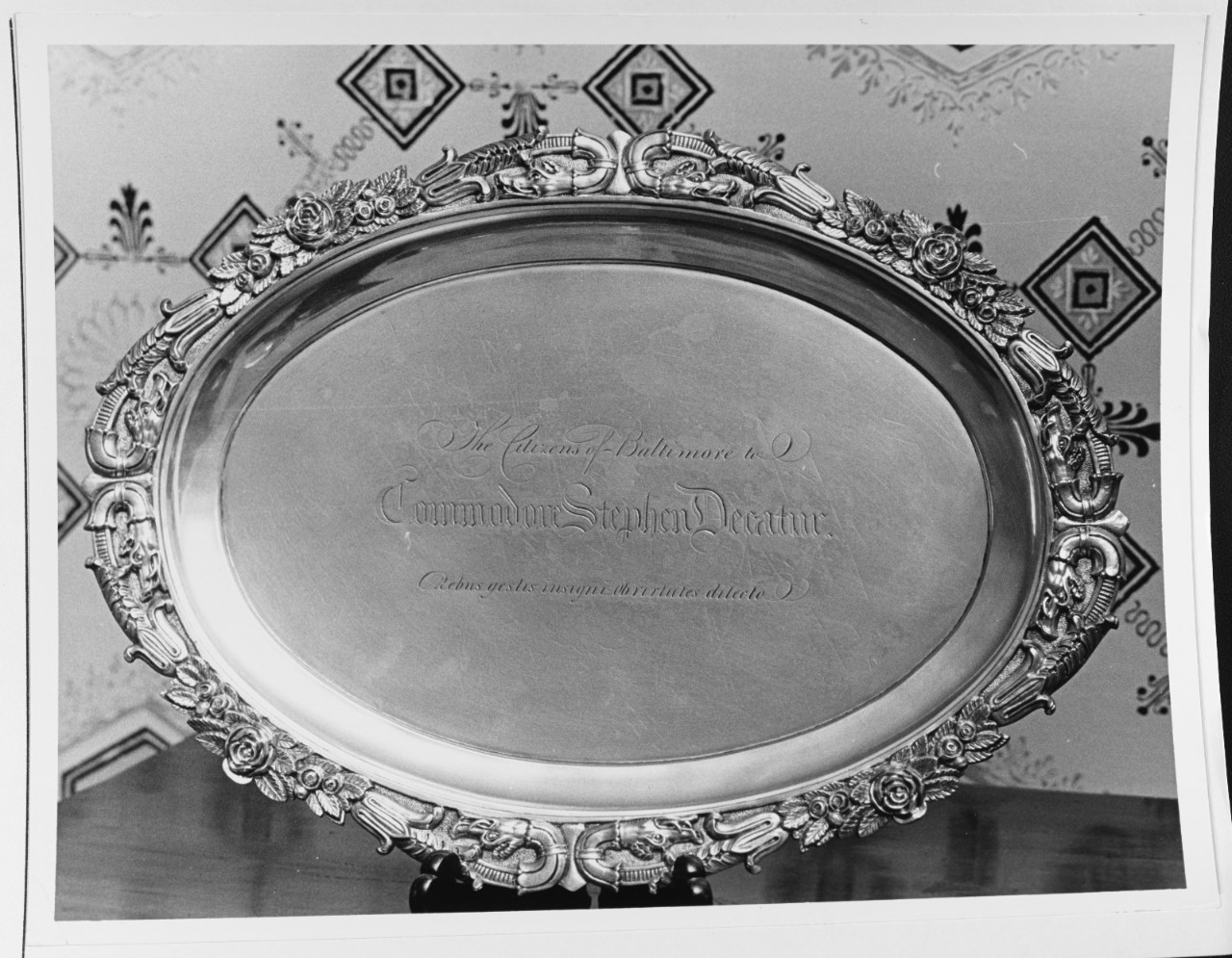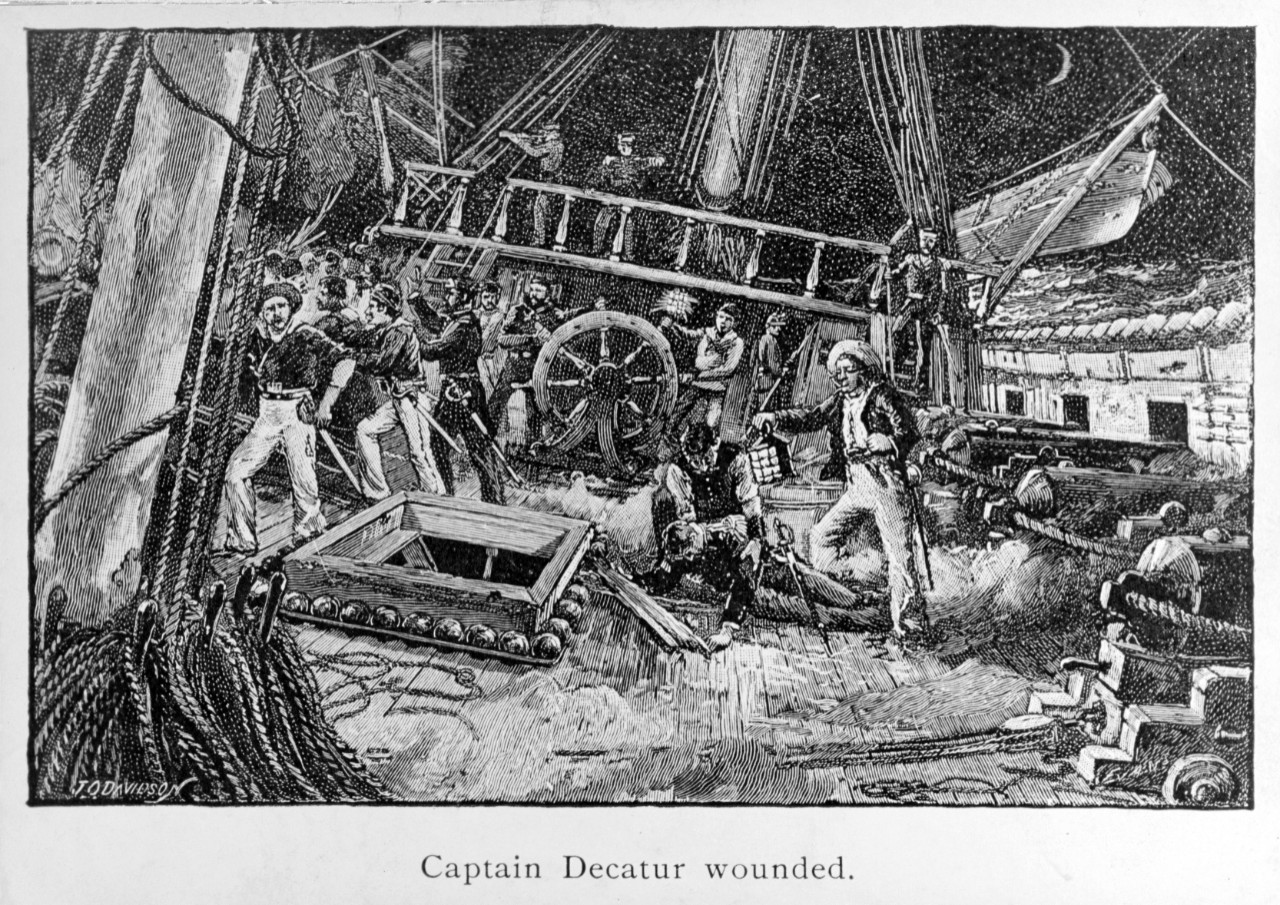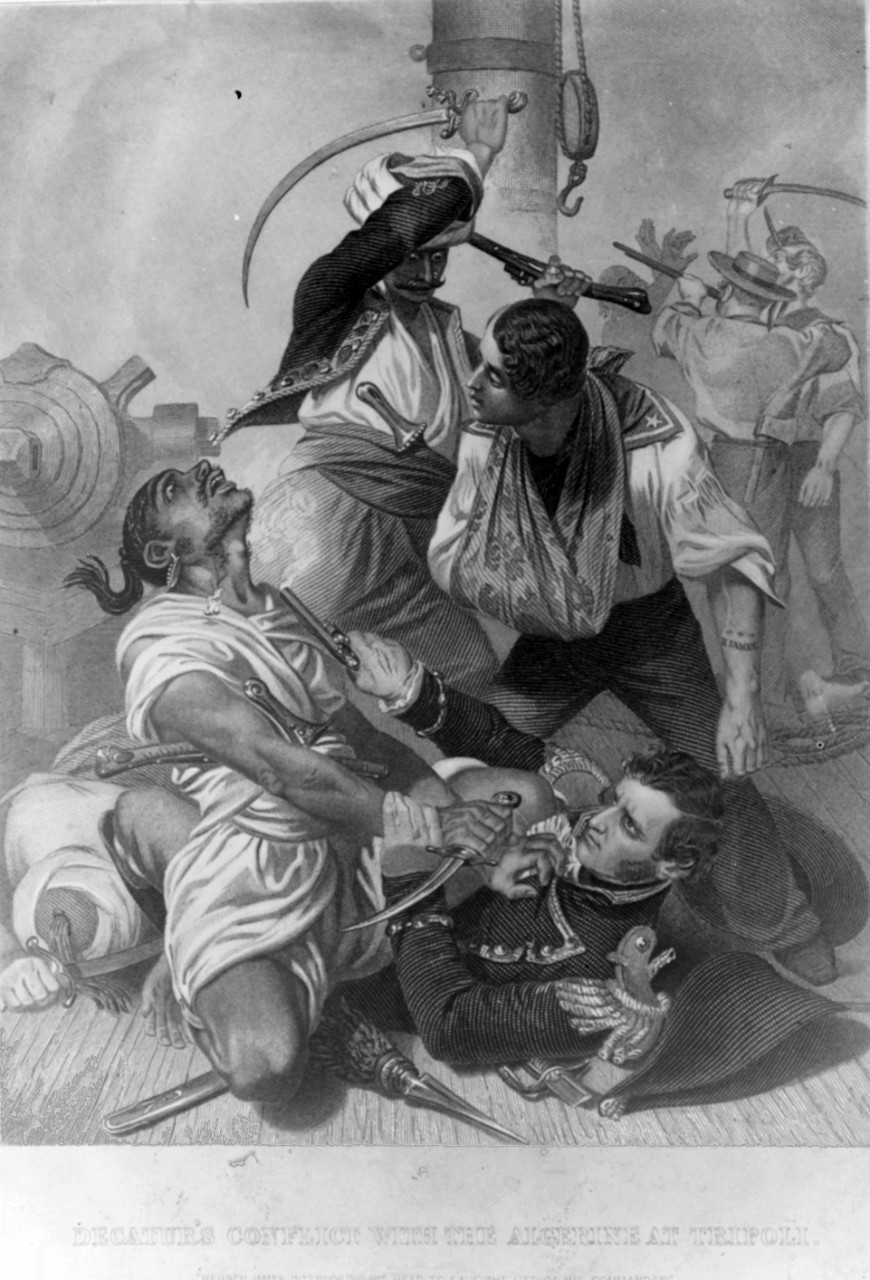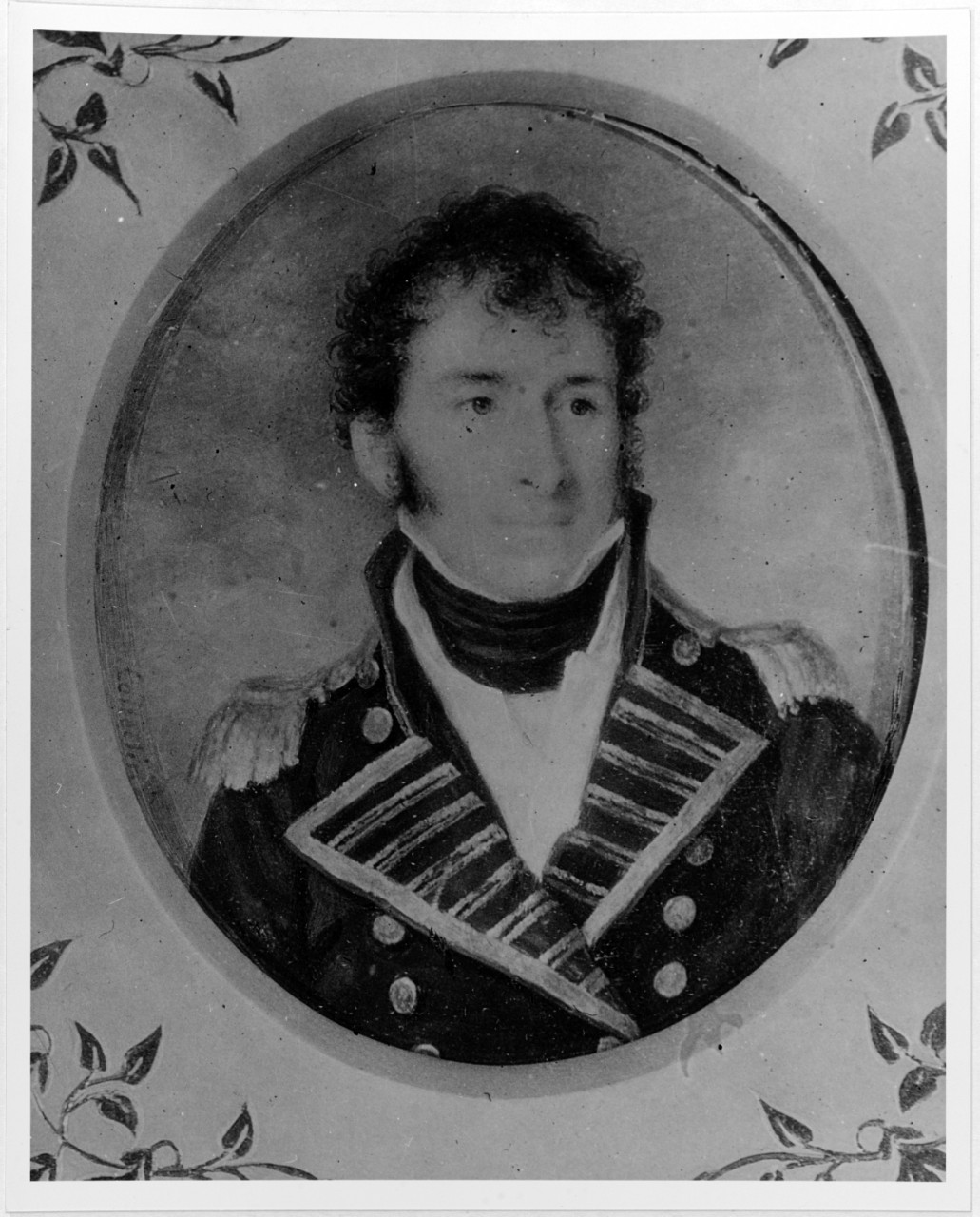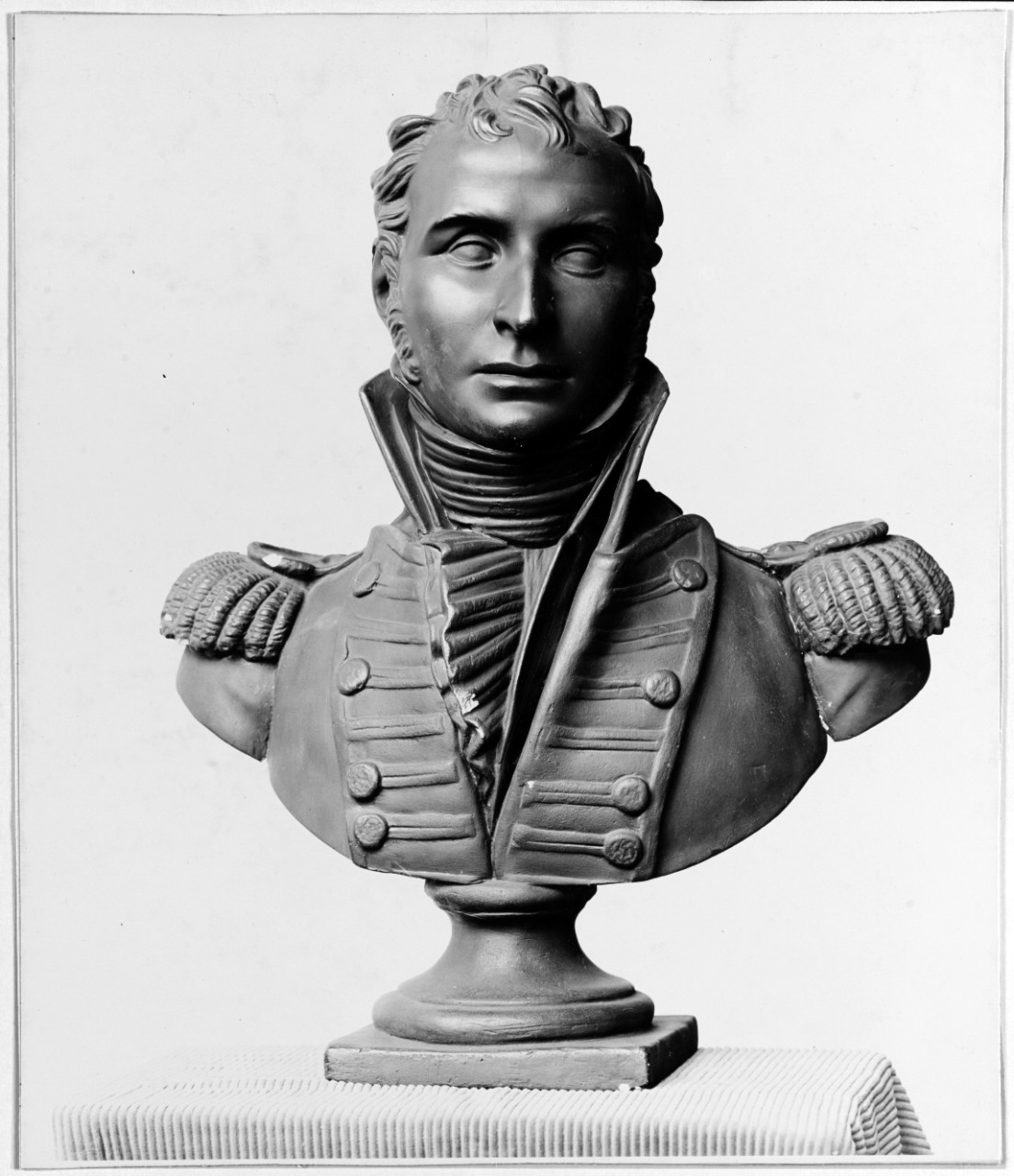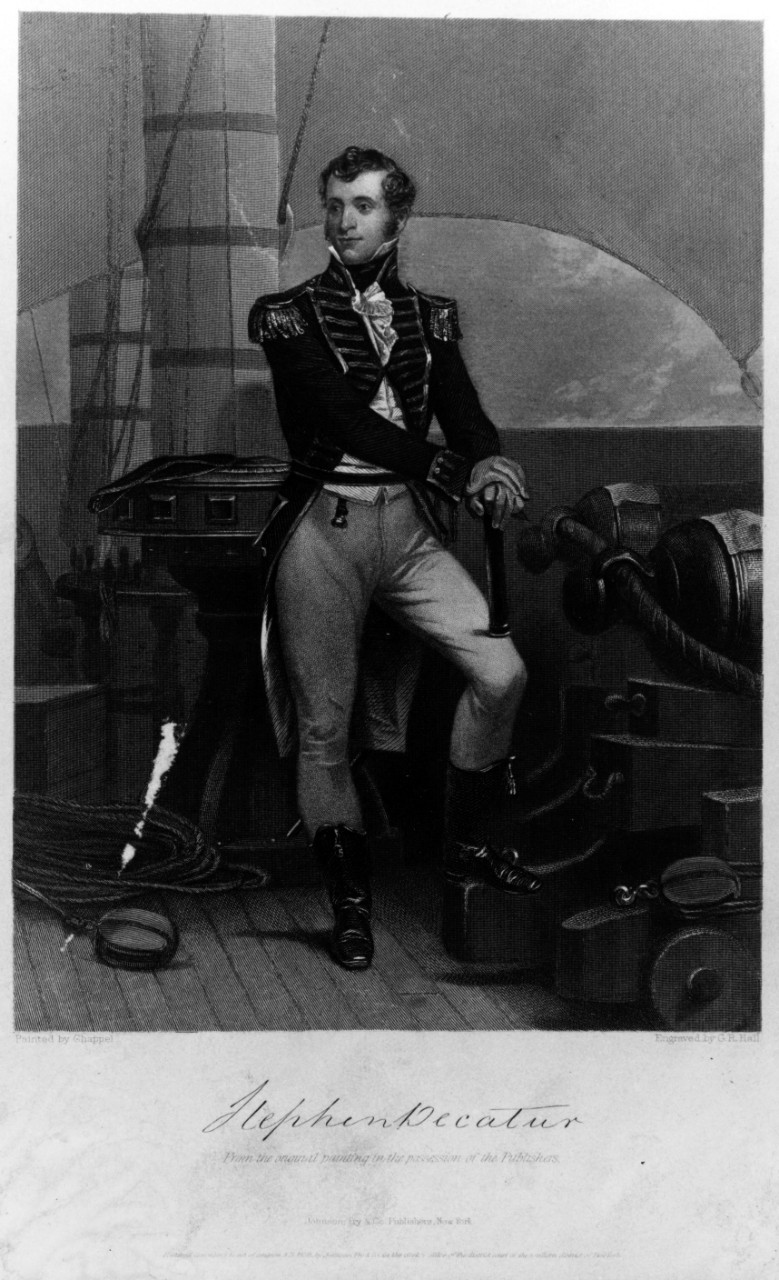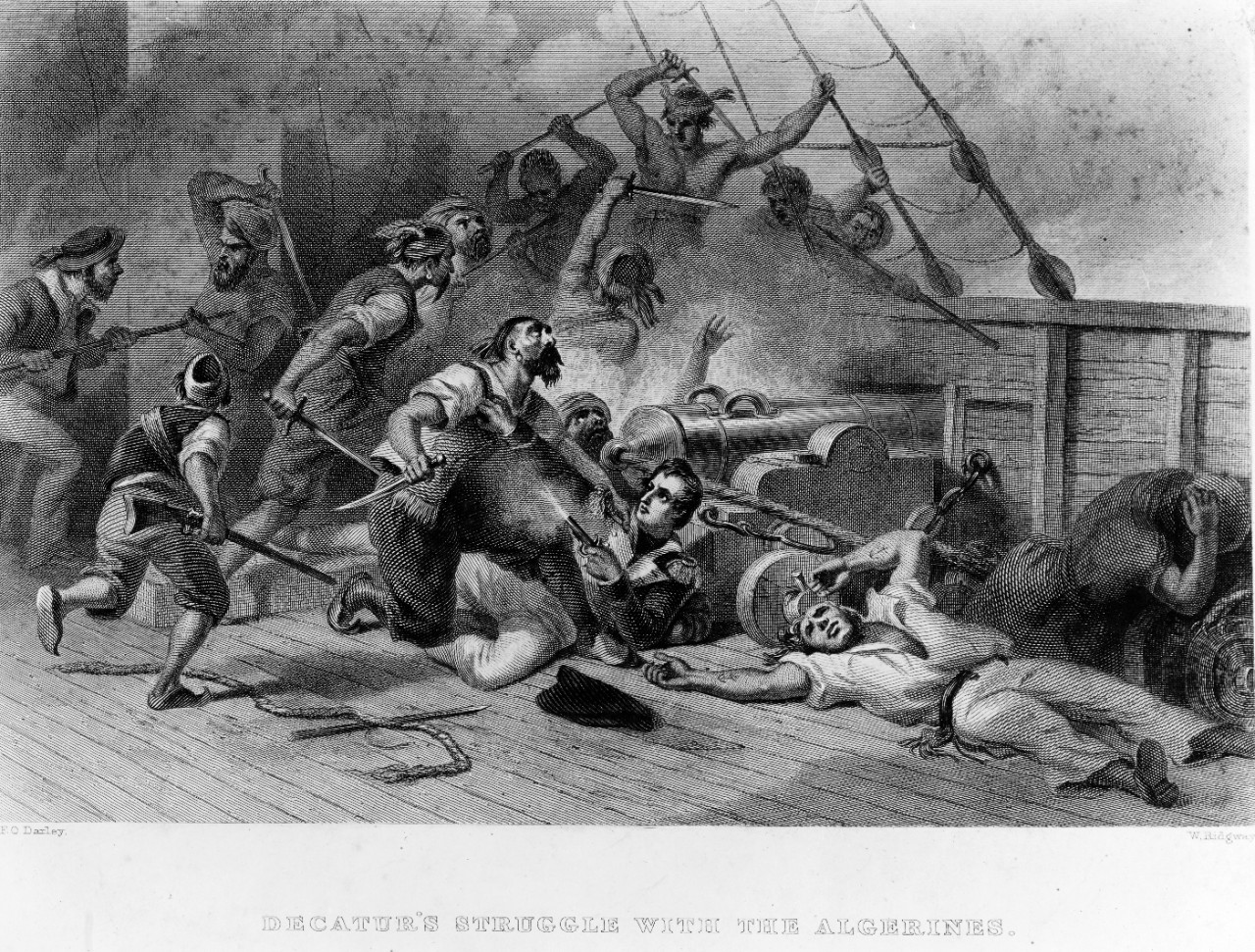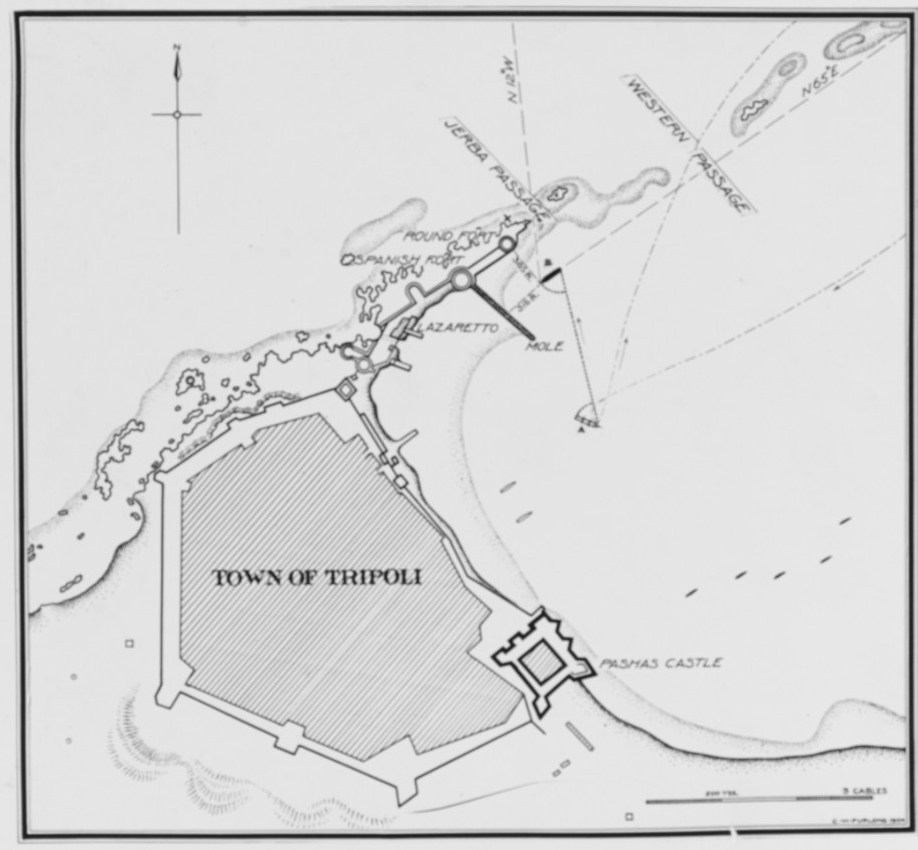Stephen Decatur
5 January 1779 – 22 March 1820
Stephen Decatur is best known for the 16 February 1804 action in Tripoli when, as a lieutenant, he and 75 Sailors set the captured frigate Philadelphia on fire during a daring raid on Tripoli harbor.
Philadelphia had been surrendered to the enemy by her commanding officer, Captain Bainbridge, when she ran aground on a reef off Tripoli harbor. The Tripolitans took the captain and crew captive, and then floated and towed Philadelphia into Tripoli harbor for plundering.
Lieutenant Decatur and his crew, aboard Intrepid, entered Tripoli harbor disguised as a merchant ship flying British colors, with the mission of destroying the Tripolitan’s prize. Under the ruse of losing their anchors in a storm, the cloaked Intrepid was given permission to moor alongside Philadelphia until morning.
A Tripolitan guard’s warning that the ship’s occupants were American came too late as Intrepid’'s crew boarded Philadelphia, overcame the Tripolitans, and set the captured frigate ablaze. Decatur and his crew were later praised for their “performance of the dangerous service assigned them.”
Born in Sinnepuxet, Maryland, on 5 January 1779, Stephen Decatur was appointed a midshipman in the U.S. Navy on 30 April 1798 and served on United States during the Quasi-war with France. He recaptured and destroyed Philadelphia as a lieutenant. He flew the pennant of a commodore during the War of 1812, and captured HMS Macedonian on 25 October 1812. In January 1815, while in command of President, he surrendered his ship to the British after a severe naval engagement and was taken prisoner. Decatur was released after peace was declared with Great Britain, after which he commanded the U.S. Navy Mediterranean squadron and secured the final treaty of peace with the Barbary Powers.
Decatur served as Navy Commissioner from 1816−1820. He was the recipient of congressional recognition and was presented with a sword for his service in Tripoli, and was awarded a gold medal for his distinguished service in the War of 1812. Decatur died in a duel with Commodore Barron on 22 March 1820, in Washington, D.C. He was initially buried in Washington, but was later reinterred in St. Peter’s Churchyard in Philadelphia.
Additional Reading:
Sybrant Van Schaick - U.S. Brig Argus Journal
Decatur House and Its Distinguished Occupants
Battle of Tripoli Harbor, 3 August 1804
Lieutenant Stephen Decatur's Destruction of Philadelphia, Tripoli, Libya
Stephen Decatur − Actions and Activities
Stephen Decatur − Engraved Portraits and Similar Depictions
The Death of Commodore Decatur
Ships Named After Stephen Decatur:
Decatur V (DDG-73)
Selected Imagery:

